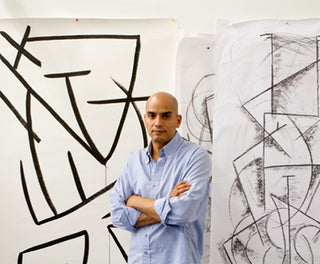Carlos “Mare 139” Rodriguez is an artist whose work goes as far back as Henry Chalfant and Tony Silver’s documentary Style Wars on graffiti in 1983. He later took the forms and shapes of graffiti and translated them in sculptures in metal, such as his breakthrough “K” sculpture. Mare also designed the BET Award as well as the Red Bull Beat Battle Award. He is also a creative director and educator, more recently working on the “Nas: Time Is Illmatic” website, as the visual arts coordinator for HiArts, and is a member of the Cornell Hip Hop Collection Advisory Board.
I met Carlos “Mare 139” Rodriguez back in the winter of 1992 through my cousin, Jorge “Fabel” Pabón. At the time, Mare and Kel lived in Williamsburg before it was even on the radar and mostly artists lived there. Even back then, Mare was years ahead of what was happening in media and art, let alone neighborhoods. For me, it was a pivotal point – they were the first successful artists in my immediate circle. 1992 was also the year I spent a lot of time with Alyasha at Phatfarm and it shaped me and my ideas on what I wanted to be and do with my life.
Now, we’re both were fathers and in similar situations in our lives, so we’ve become closer as friends and have stayed in contact since. Mare has always been somewhat of mentor to me, in my work as a artist and in other aspects of my life. He often describes our lifestyle as “lifers,” and I can agree, but I’ll let you see for yourself below.
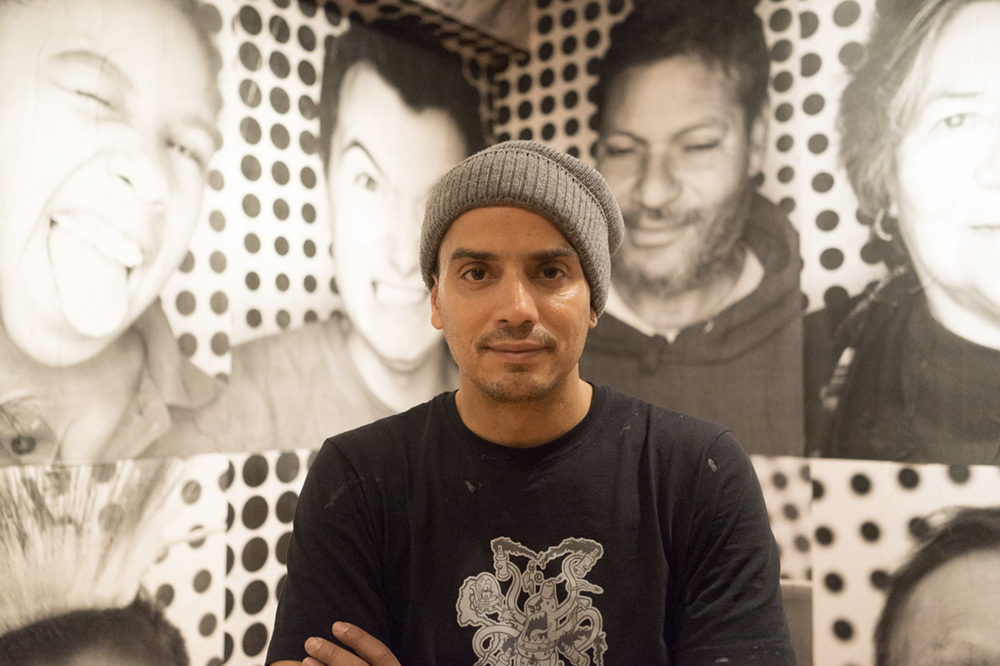
PETE PABON: Carlos Rodriguez, also known as Mare, right?
Yeah, Mare, Mare 139 from 139th street in South Bronx.
Was there a single instance that sparked the idea of doing sculpted letters like the “K?” Was there a single instance that your art left being on a surface and started actually coming out into occupying 3D?
Well, the first instance of the graffiti sculpture really happened in 1984 when I was in school. I was at Parsons School of Design and they had us do an assignment on Dada. Dada art – it was suggestive and provocative and all that stuff and I was like, “Why does he have to be so heady? It seems rather simple.”
So what I did was I made a sculpture – tools of the trade – and it was my first sculpture and it was very simple. It was a spray can with a brush tip. And that was the first interest I had in sculpture as an abstract idea completely connected to the culture of writing and art.
After that, that’s when I sparked my interest to think about what happens after graff because at that time a lot of writers had quit during the early ‘80s and I was probably one of the last of my group. Dondi had quit, Crash had quit, Kel had quit, and I was like, “What to do next?”
One day I saw one of the great style masters, Cos 207, walking down the street. And I saw this metal signage and I was like, “Exactly, that’s what has to happen.” And from then on, I knew. The next day I made a letter – the letter “K” with moving parts. It was a wild style piece, it was perfect. So I knew right then and there that I was on track.
Is the evolution an important part of graffiti to you?
Yeah, that’s all it is. Think of it – it started with a simple signature or a symbol. So imagine going from a symbol to a top to bottom train.
Makes sense. Do your lectures take priority over you making art?
Sometimes. I think that art can only say so much about what I witness and participate in within the culture. The sculpture definitely points back to graff and modernism and all these new ideas I have about architecture and things like that. So it does that, it is what it is, it’s an exercise in what I call style writing or drawing in space.
So for me, I think that speaks to a certain audience, but I also think talking about the experience and sharing the experience and the knowledge has always been a big part of it.
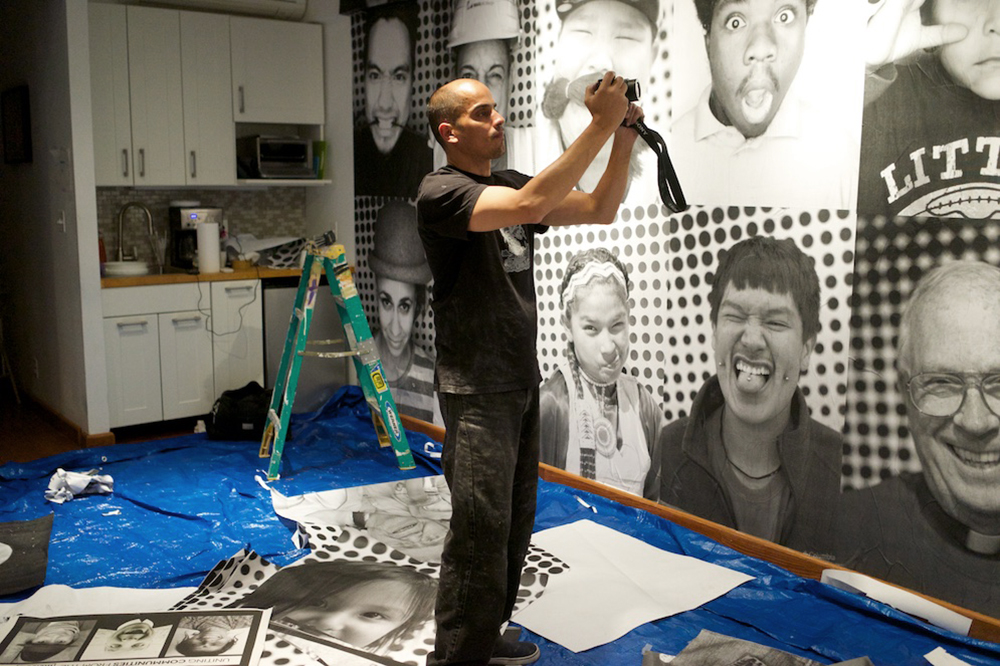
Not a lot of artists are as intense and knowledgeable on the history of art in the way that you are, where did your fascination with the history of art begin?
It started with graffiti. It started with writers and wanting to know who was the first writers, who did what first, who was from what neighborhood, and who did this piece. There were great names, super cool, Super Strut, [Stayhigh 149], Little [Kendo], Shorty 13 – it was really special to be in this kind of young kid trying to discover who were the style masters and try to be like them.
So that’s where the history started taking shape for me because I seeking it out and also, the community was giving it back. So for me, I had art history built in to my experience as a writer. But I also went to school right across from museums on 77th street. So I was always in the museum of natural history as a real young kid; that was my hangout. Just walking and not being an art nerd or anything, just being in front of and experiencing over and over and over again. These paintings and these objects – you never have the same idea twice about them, so that’s kind of cool.
“HISTORY IS A THREAD IN MY WORK.”
I remember the first time I met you, I think you were still living in Brooklyn with your brother. And it was a Christmas party in the ‘90s and I remember you guys were on the forefront of multimedia, you guys were doing Voice of the Ghetto and stuff like that.
Voice of the Ghetto Productions and Mirame Media.
I remember that there was this rumbling – like an undercurrent of what the Internet was going to become. Because I remember you and Futura were starting to play around with imagery on the web and stuff before anyone. And I remember Futura 2000 and that was the precursor to blogs because he would post daily –just random information.
Oh yeah, technology is a big part of my history. Because I just launched the “Nas: Time is Illmatic” website and have the hip-hop education center website coming up. So you see how education and culture come into play in my work. History is a thread in my work.
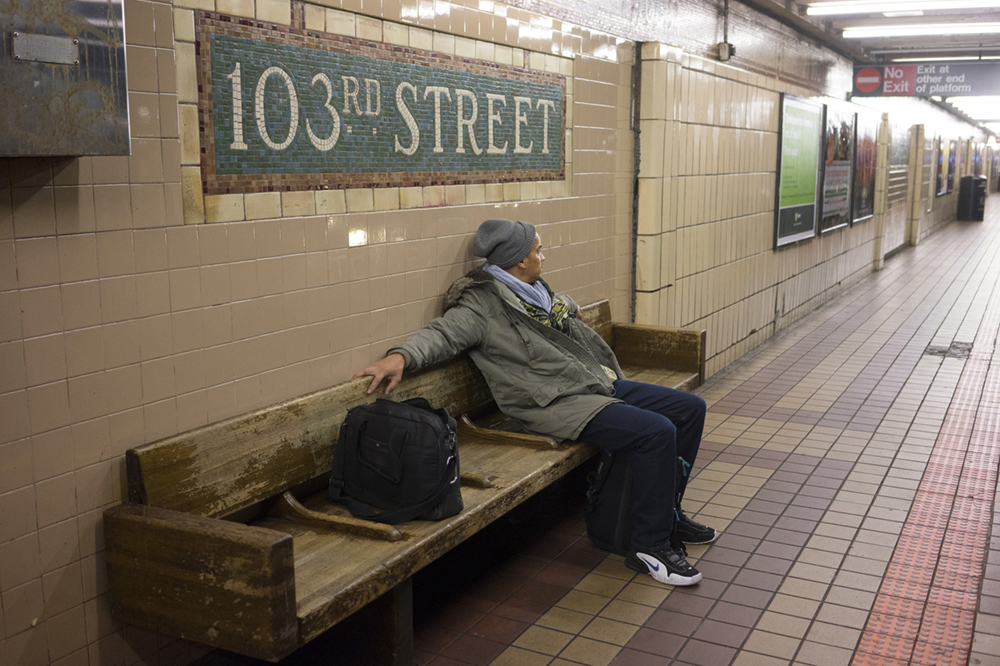
I look at it now and I’m like, you guys were so ahead of what was going to happen. This was, I want to say ’92 or ’93; it was just amazing.
Yes, but keep in mind, people like Phase 2 and IGT Times were so – they were publishing. We were publishing original books throughout our youth. So media, this transition – an exchange rather – this exchanging, this networking and exchanging of ideas was analog. But it translated to digital perfectly and we saw that. I was like, “Oh yeah, I can send you an outline, I can send you an outline, or I can tell my story, I can be my own network.”
Kal and I in those days – because he came from a publishing background – he was so instrumental in putting me on and teaching me and helping me structure ideas and content and purpose for the work and the quality of it. He was really instrumental.
I think around that time was when I started learning about the Mac, and meeting you and thinking, “Yo, this stuff is so far ahead of what’s going on and you guys are using it in a way that no one has used it. And it’s self-taught.”
Yeah, we completely taught ourselves. And one of the nice things about the studio in Williamsburg at the time was that it was a very quiet place, no one was going there that were musicians and artists. It gave us a lot of time to be experimental in a huge studio space with four, five, six work stations. And it was intense because it was like a boot camp for a lot of writers and young guys coming up. They were more than welcome to come join and learn and share.
Do you see the surge of artists, particularly pop artists, as a good or a bad thing?
I think it’s a good thing, I think there’s more than enough room for people out there. I also think there are spaces for everybody, not everybody can occupy the same space, the same market value, or the same opportunities for that matter. Creativity, whenever it’s in action, that’s what’s up. That’s what we should celebrate no matter how bad it may look or not appeal to you.
I’m like, whatever, I’ve got to worry about my shit and my interests and my friends and my community.
Do you think social media has changed art?
Yeah, it’s one of the greatest things to happen to art. This open database and network to ideas and it’s amazing that it can teach and influence and also inspire copy cats. I think it’s great, it pushes issues about owner’s rights and intellectual property and stuff like that, but art should participate as much as it can online to network.
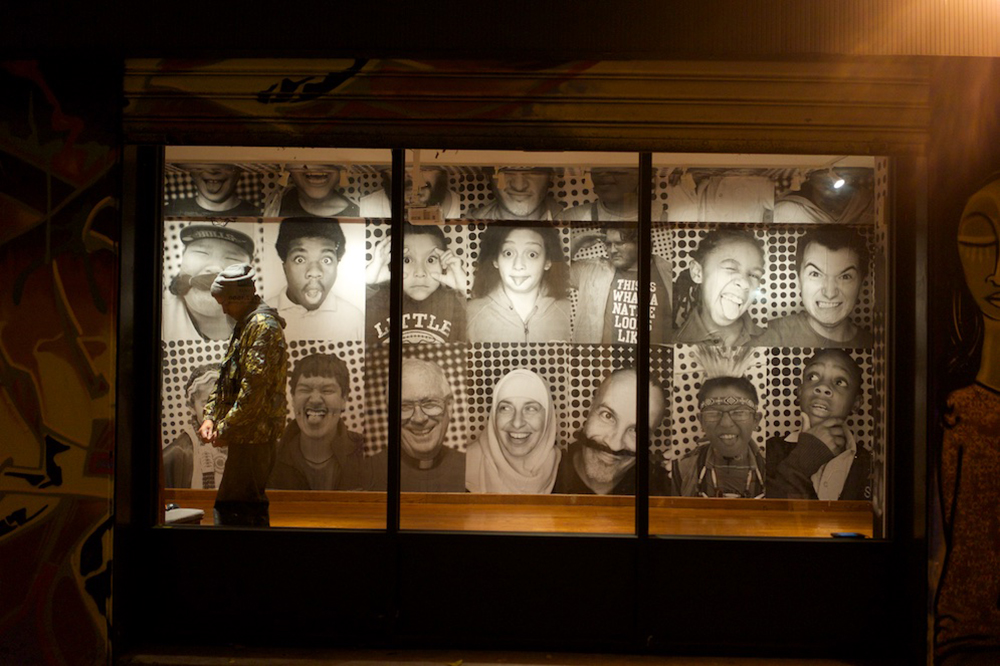
Do you think you’d be the artist you are today if it weren’t for New York and what do you think New York would be if it weren’t for the art that happened?
Well, New York historically has always been a mecca for art and ideas because of all the immigration, especially from Europe during World War 1 and World War 2 and even the Vietnam War. These periods in New York history that affect New York history produce some of the greatest art. Whether it was protest art, community art – movements like social movements like the Young Lords.
These guys, through music and protest, helped create change. So yeah, it’s a positive thing.
Yeah, I don’t even think that’s a fair question. In what ways has graffiti changed for the better or for the worse?
I think it’s changed for the better, I think it’s better than it’s ever been. And only gets better, there’s no denying it. It’s bigger, better, it’s more creative, more diverse, more challenging, more daring, and it’s one of those art forms that lends itself to so many disciplines and collaborations. So right now it’s perfect.
“[SOCIAL MEDIA IS] ONE OF THE GREATEST THINGS TO HAPPEN TO ART.”
The idea of graff merging with street art and street art is collaborating with graff writers – like this [Inside Out] show, JR’s idea, his concept, his blueprint – he was a writer too. So this is born out of that spirit of writing and what writing is in this new day, this new space – what getting up means, what getting the message out means.
Between graffiti, sculpture, and digital media, which do you first go to in order to get your creativity out? Any preference?
I don’t have any particular preference in terms of my practice and discipline. I don’t prefer one over the other for that matter, whether it’s the education part or the sculpting or the painting. There are periods where I have time for it, for practice, or time to develop other parts of my creative practice. That’s why I’m in a lot of different spaces with my work – commercial space, public space, and the marketplace for art.
It’s a calendar thing for me.
It probably also helps you from burning out or getting tired of any one discipline.
You see, when I decide a project, I go hard to try to express myself through that project. When that’s done I’ll break and do another project. These things always weave into each other, not everything is 24/7 unless I’m doing a site specific exhibition. And I just came off of one a couple months ago in Istanbul. When I was there I created everything at the museum and on the fly, it was fantastic. And I was like, “Okay, purged, next.”
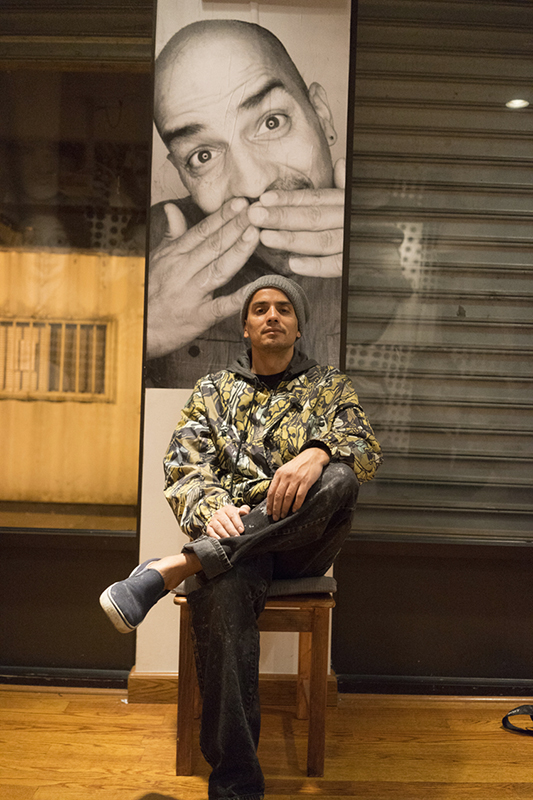
How was that experience in Istanbul?
It was amazing because I’ve been there before so I kind of knew what kind of city it is. When I got there this time around, I was so surprised how it changed. One of the first things for me when I go out on these projects as an artist is research where I am immersed and then kind of live it and be able to channel that through the work somehow; through my ideas or how I get on with folks.
So it was nice to go back with a group of artists that I knew and artists that I wanted to meet. The Pera Museum was fantastic because they supported a group of 20-something artists and put us up in this nice hotel next door. And we had full reign of the hotel of museum. We could work all night and connect in the rooms and build and that added to the whole experience of being there; the bonding and creativity. I was able to take all that and put it into my work.
So when I got to the foundry it was easy for me to just flow.
“OKAY, PURGED, NEXT.”
You were in the right mindset.
And it showed in the work, it was perfect because it’s that mentality, you go to the lay up, you do the best piece you can, and get out. There’s something about that, especially when you’re in this collaborative space with other artists. A lot of writers and artists, gentlemen, don’t openly say how competitive they are with their work and how they come into a space.
When you go to a museum situation like that, for me it was like, “Wow, people are bringing out some of their best guns; best work. What am I gonna do?” And so I clearly got open and made a lot of work.
You launched the Time is Illmatic website right? How did you get involved in that?
I knew the filmmakers and one of the executive producers is a partner with me at my education center, Martha Diaz, and One 9 and Aaron Parker, a filmmaker, writer and director. We had hoped to work together on something someday in the future, but this came about. They were like, “Would you be interested in developing the website?” And I said, “Sure, I know the film intimately and I know you guys.”
And I felt that it’s a project that brought me back to the digital media space, which I always loved. While I have a design studio, I don’t want to be building out websites just to build websites, I want it to be meaningful projects. So I felt that was one because it had an education component to it that’s wonderful, and interactive timeline that’s wonderful about Nas’s life.
It’s part of this upcoming experience with the hip-hop education center and collaboration with Tribeca Films. So it’s a really wonderful project to be coming back to the digital space with.

